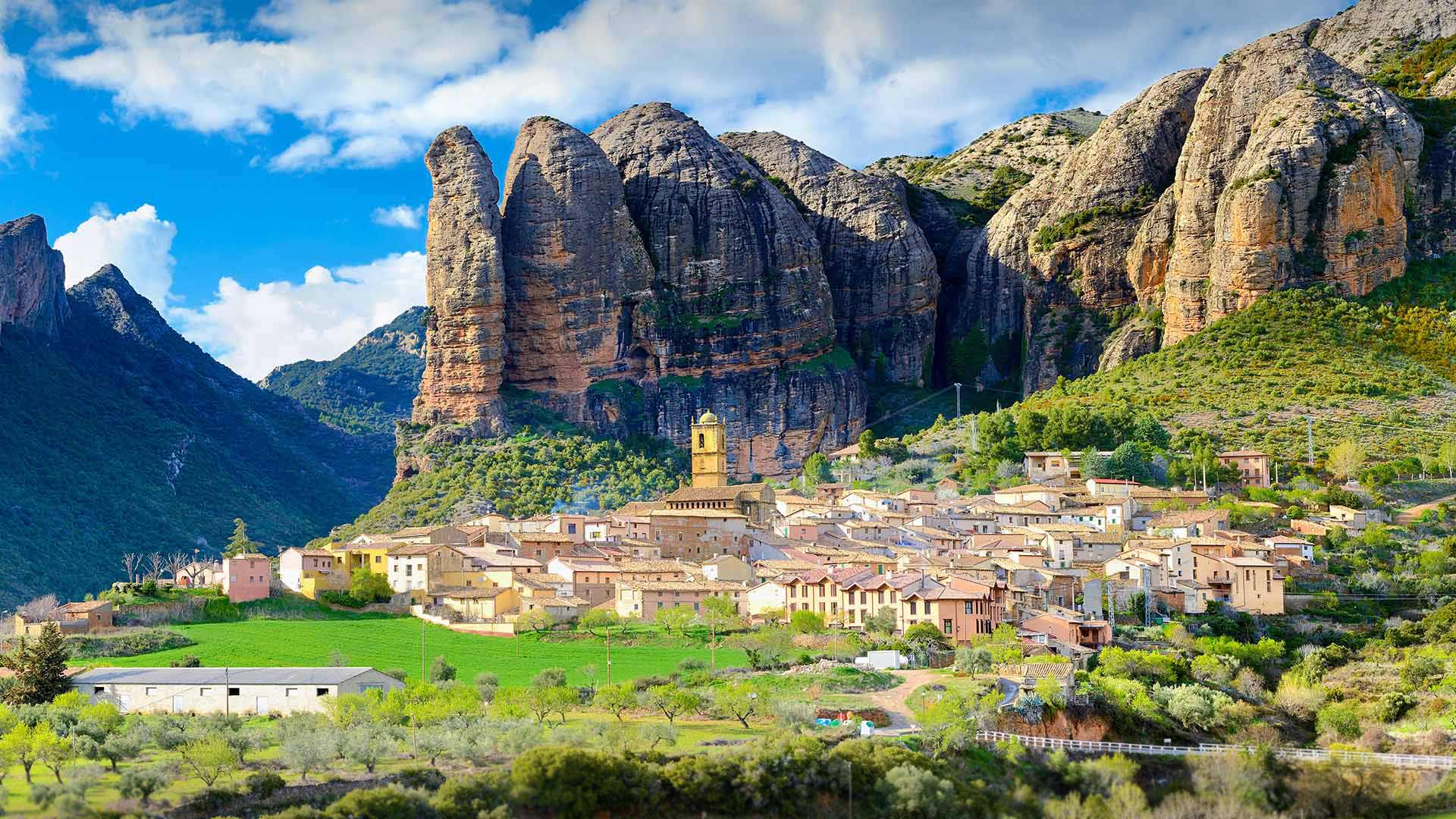标签 西班牙 下的文章
加利西亚省科斯塔达莫尔特的灯塔,西班牙 Faro de Playa Lago, Costa da Morte, Muxia, Galicia, Spain (© Carlos Fernandez/Getty Images)
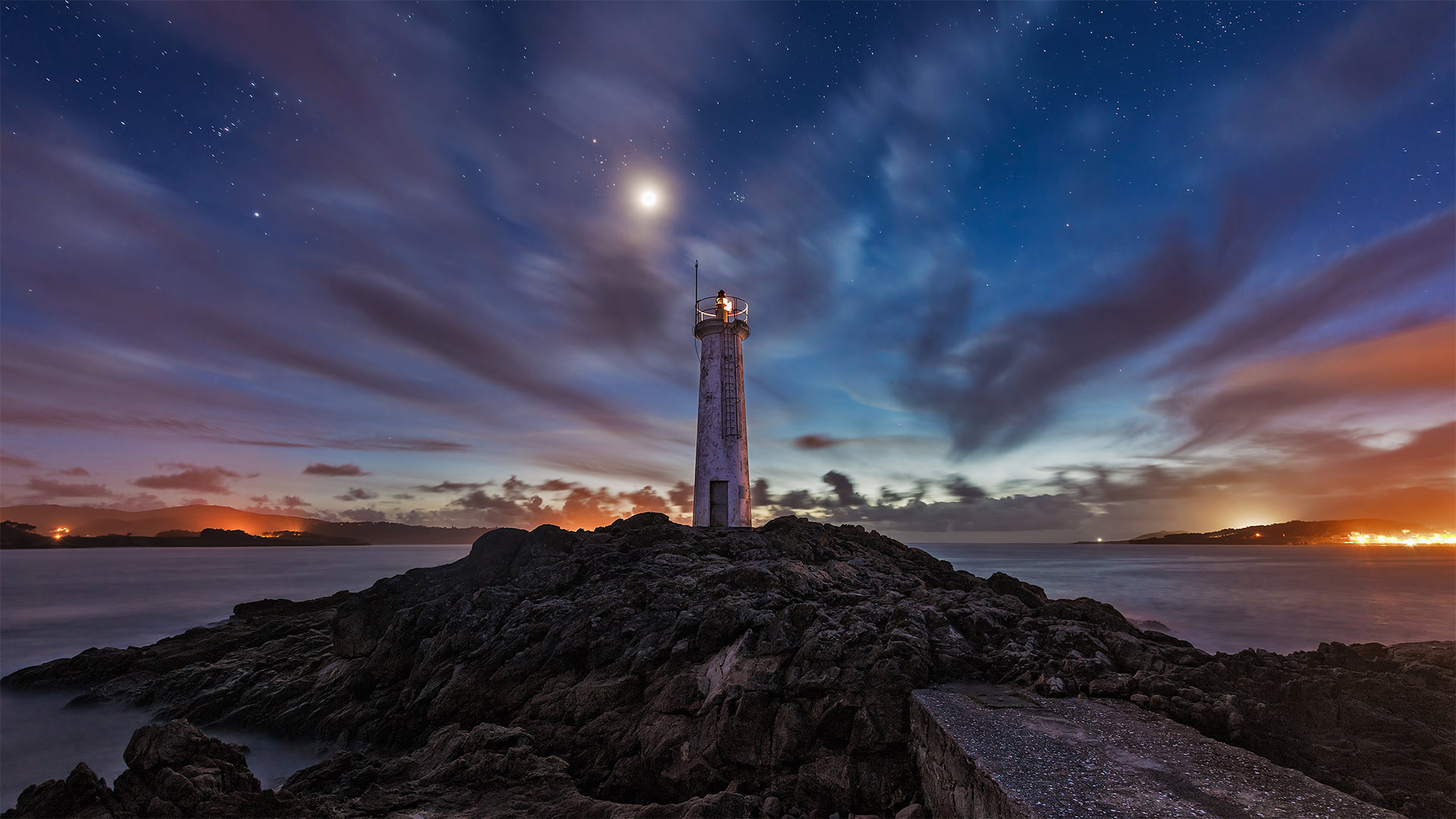
加利西亚省科斯塔达莫尔特的灯塔,西班牙 Faro de Playa Lago, Costa da Morte, Muxia, Galicia, Spain (© Carlos Fernandez/Getty Images)
死亡海岸 The Coast of Death
International Lighthouse Day
This solemn beacon set atop a rocky outcropping is in a country usually associated with sand and sun, making this a side of Spain many do not often see. We're looking out at the sea on the Costa da Morte, or Coast of Death, a nasty name for an equally nasty (but beautiful!) stretch of Galician coastline in the extreme northwest of Spain. We're featuring Costa da Morte on International Lighthouse Day because mariners are never happier to see a lighthouse than when they're sailing this coast, known as the Bermuda Triangle of the Eastern Atlantic.
The Costa da Morte is known for its lighthouses, like this one, called Faro de Playa Lago, one of many strung along 125 miles of coast from Finisterre in the south to Malpica in the north. As a devourer of ships, the Costa da Morte is prolific. Since the 14th century, more than 600 shipwrecks have been documented resulting in the loss of thousands of lives. This corner of Spain lies at the southern end of the Bay of Biscay, also known for its rough waters. The rocky Costa da Morte faces the open North Atlantic and takes the brunt of big ocean swells. (The famous big-wave surf break at Nazare, Portugal, is only a few hundred miles to the south.) Deep waters turn to shallow waters quickly near this rocky cliff-strewn coast, known for its strong currents and hidden rocks. The fog can roll in quickly. Storms form frequently. And hurricane-force winds are not uncommon.
Cool, rainy, and rocky, the Galicia region of Spain is more 'Lord of the Rings' than Club Med. Hiking along this coast, you might feel like you're Scotland rather than Spain, and is compounded by the fact that Galicians themselves are considered a Celtic ethnic group. To visit the lighthouses of Costa da Morte, you can walk a trail appropriately called Camino dos Faros (Road of the Lighthouses). While satellite technology and electronic instruments vastly changed how safely we can now navigate the seas, lighthouses are still vital to boating and the maritime industry. Plus, they're just darn good-looking.
国际灯塔日
这座庄严的灯塔矗立在岩石露头上,位于一个通常与沙子和太阳联系在一起的国家,这使它成为许多人不常看到的西班牙的一面。我们看到的是死亡海岸(Costa da Morte)上的大海,这是一个同样令人讨厌的名字(但很漂亮!)西班牙西北端的加利西亚海岸线。我们在国际灯塔日特别报道科斯塔·达·莫特,因为水手们在这个被称为东大西洋百慕大三角的海岸航行时,看到灯塔最开心。
Costa da Morte以其灯塔而闻名,比如这座被称为Faro de Playa Lago的灯塔,它是从南部的菲尼斯特尔到北部的马尔皮卡沿海岸线125英里的众多灯塔之一。作为船舶的吞噬者,科斯塔·达·莫特是多产的。自14世纪以来,已有600多艘沉船被记录在案,导致数千人丧生。西班牙的这个角落位于比斯开湾的南端,也因其汹涌的海水而闻名。多岩石的Costa da Morte面对开阔的北大西洋,首当其冲地承受着巨大的海浪冲击。(葡萄牙纳扎尔著名的巨浪冲浪场位于南面几百英里处。)在这片岩石峭壁遍布的海岸附近,深水迅速转变为浅水,以其强劲的水流和隐藏的岩石而闻名。雾很快就会卷进来。风暴经常形成。飓风强度的风并不罕见。
凉爽、多雨、多岩石的西班牙加利西亚地区与其说是地中海俱乐部,不如说是“指环王”。沿着这条海岸远足,你可能会觉得自己是苏格兰人而不是西班牙人,这是因为加利西亚人本身被视为凯尔特人。要参观Costa da Morte的灯塔,你可以走一条名为Camino dos Faros(灯塔之路)的小径。虽然卫星技术和电子仪器极大地改变了我们现在在海上航行的安全程度,但灯塔对划船和海运业仍然至关重要。而且,他们真是太漂亮了。
圣埃尔姆附近的潘塔留岛鸟瞰图,西班牙马略卡岛 Aerial view of the island Pantaleu near Sant Elm, Mallorca, Spain (© Dimitri Weber/Azing航空公司)
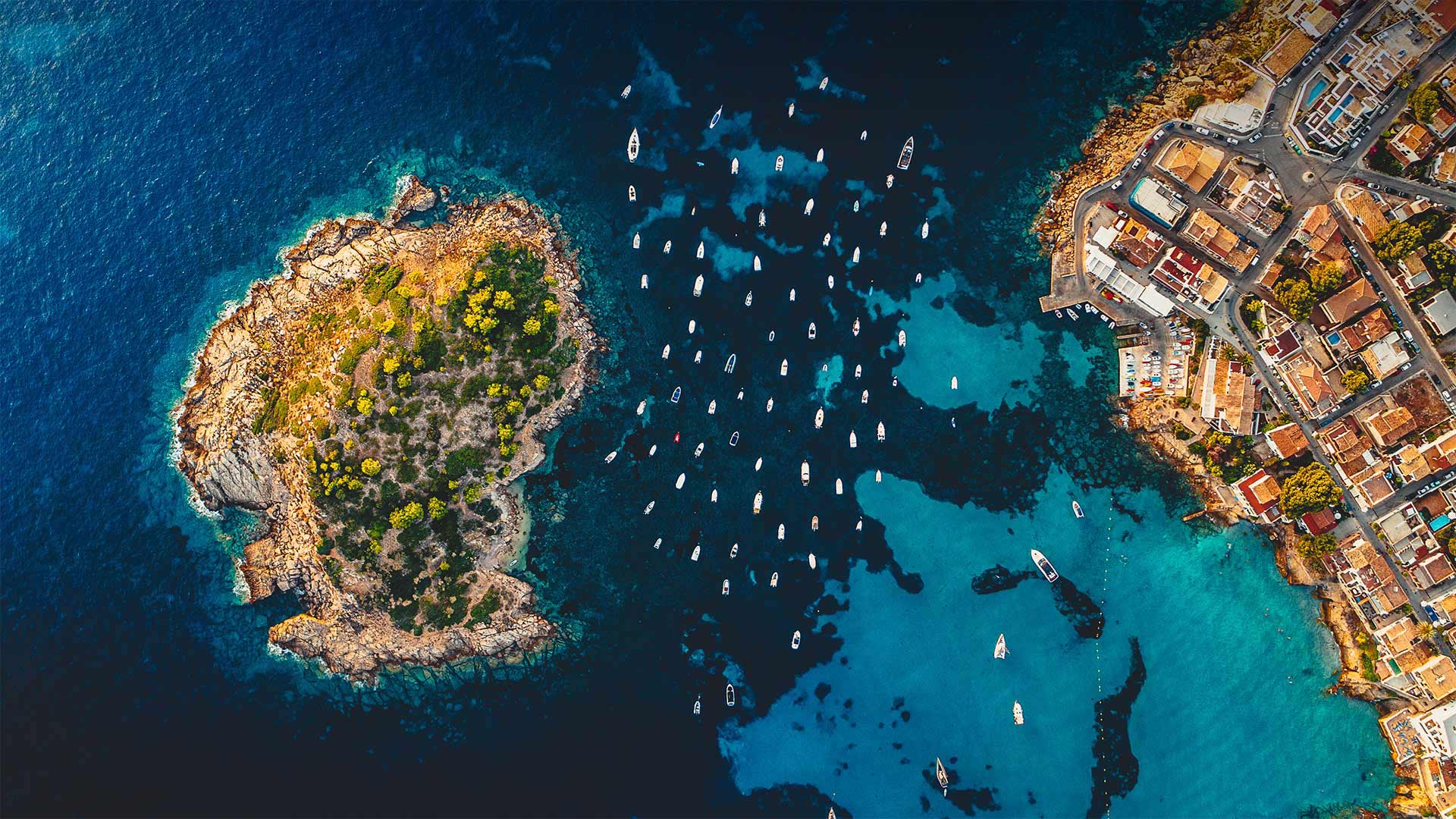
圣埃尔姆附近的潘塔留岛鸟瞰图,西班牙马略卡岛 Aerial view of the island Pantaleu near Sant Elm, Mallorca, Spain (© Dimitri Weber/Azing航空公司)
汪洋中的小岛 Little Island, Big Sea
Pantaleu
There isn't much to the tiny island of El Pantaleu (or Es Pantaleu in Catalan), cast off the westernmost shore of Mallorca, itself a relatively small island only 30-40 miles across. Pantaleu and Mallorca are part of the archipelago of Balearic Islands in the Balearic Sea, off the east coast of Spain. Mallorca, Ibiza, Menorca, and Formentera are the chain's four major islands and are famous as tourist destinations popular among those seeking the warm Mediterranean climate and inviting shoreline.
Pantaleu is more precisely an islet, a mere rock of about six acres in size. Its highest point is 80 feet. Not much grows on El Pantaleu, and no one lives on it. Mallorca is only about 1,000 feet away, making it a vigorous but doable swim for the many who have tried from the beach at the village of Sant Elm. Technically, no one is allowed to step foot onto Pantaleu, because it is designated a nature reserve along with the much larger Dragonera Island a few miles farther to the west.
Pantaleu is most useful as a wind break for boats, as you can see from this aerial photo. The notch between the islet and the main island is a popular anchorage for the many pleasure boats that cruise these waters. Even centuries ago, sailors understood the value of Pantaleu as an anchorage. In 1229, young James I the Conqueror, King of Aragon, and his fleet sought refuge from a storm behind Pantaleu before he embarked on his campaign to invade the Balearic Islands and start making good on his nickname. These days, most of the turf battles around here have been settled, although you might have to parry a vacationer for a spot on the sand or a table at happy hour.
潘塔留
位于马略卡岛最西岸的小岛El Pantaleu(或加泰罗尼亚的Es Pantaleau)没有什么特别之处,它本身是一个直径只有30-40英里的相对较小的岛屿。Pantaleu和Mallorca是西班牙东海岸巴利阿里海巴利阿里群岛的一部分。马洛卡岛、伊维萨岛、梅诺卡岛和福门特拉岛是该群岛的四个主要岛屿,是著名的旅游目的地,深受寻求温暖地中海气候和迷人海岸线的游客的欢迎。
潘塔留更准确地说是一个小岛,一块只有六英亩大小的岩石。它的最高点是80英尺。El Pantaleu岛上没有多少植物,也没有人靠它生活。马略卡岛离这里只有1000英尺远,对于许多在圣埃尔姆村海滩上尝试游泳的人来说,这是一次充满活力但可行的游泳。从技术上讲,任何人都不允许踏上潘塔留岛,因为它被指定为自然保护区,与西边几英里远的大得多的龙时代岛一起。
从这张航拍照片中可以看出,Pantaleu是船只避风的最佳场所。小岛和主岛之间的缺口是许多游船在这些水域航行的热门锚地。甚至在几个世纪前,水手们就知道潘塔留作为锚地的价值。1229年,年轻的征服者、阿拉贡国王詹姆斯一世和他的舰队在开始入侵巴利阿里群岛并开始利用他的绰号之前,在潘塔留后面躲避风暴。这些天来,这里的大部分地盘之争都已经解决了,尽管你可能不得不避开度假者在沙滩上或欢乐时光的餐桌上。
巴塞罗那城市上空,西班牙 Barcelona, Spain (© SW Photography/Getty Images)
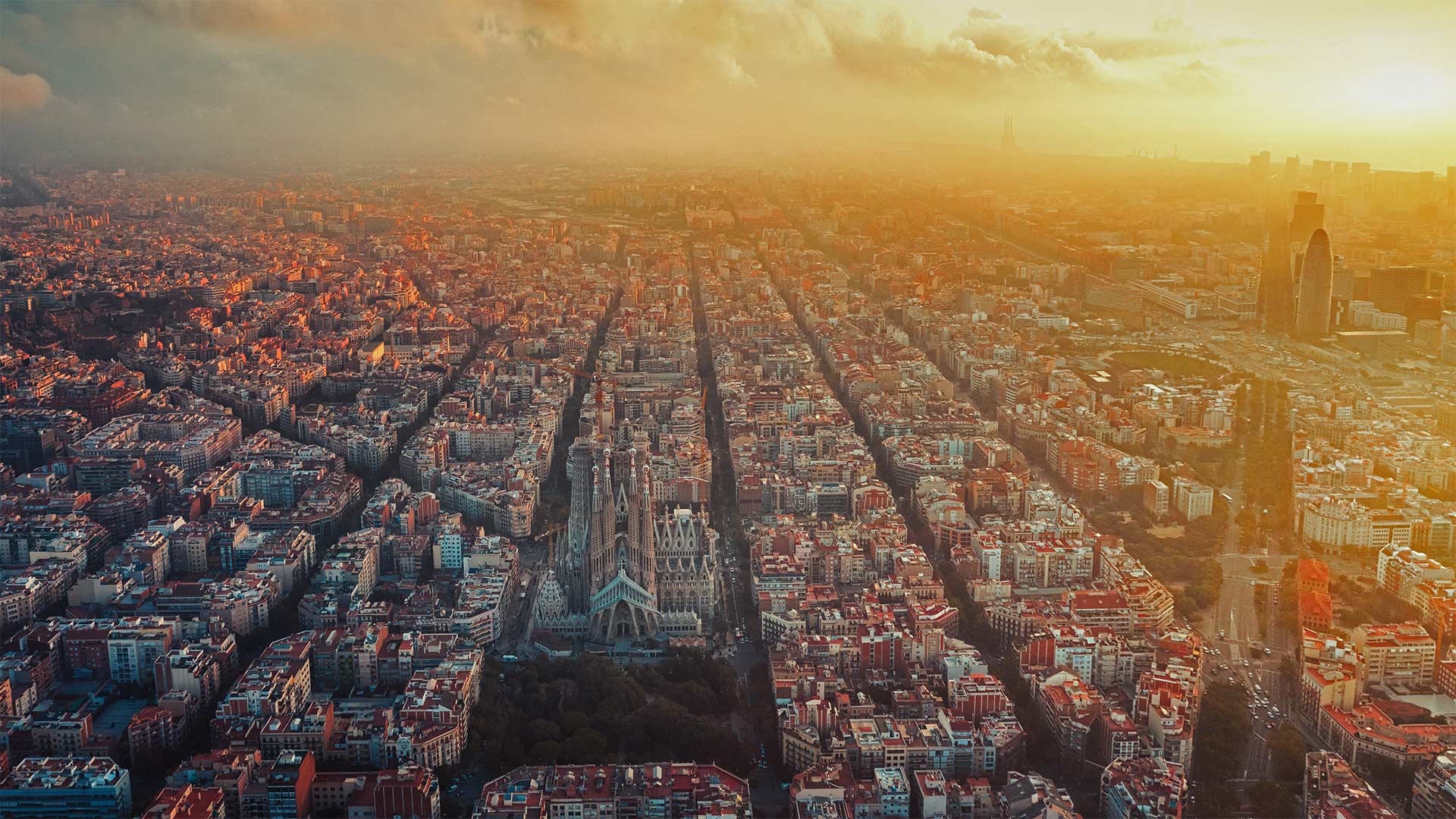
巴塞罗那城市上空,西班牙 Barcelona, Spain (© SW Photography/Getty Images)
城市规划永不停歇 Urban planning never stops
World Population Day
The bustling city streets of Barcelona seem as good a place as any to mark World Population Day. More and more of us are heading to the city. It's estimated that 2007 was the first year in which more people lived in cities than in rural areas. If current trends continue, by 2050 about two-thirds of the world population will be living in cities. City planners and government officials will need to account for this rapid increase as power grids, water supplies, public transit, and emergency services will all be stretched.
World Population Day was created by the United Nations in 1989 to focus attention on the urgency and importance of population issues. After hundreds of thousands of years, the world human population finally reached 1 billion around the year 1804. In just over 200 years since then it has exceeded 7.7 billion. It's expected to grow to around 8.5 billion in 2030, 9.7 billion in 2050, and 10.9 billion in 2100. How many is too many? What standard of living can we expect for people when the population exceeds 10 billion? And how many people can the planet sustain while also allowing nature to thrive? These are among the questions policy makers will confront as they consider the future of our world.
世界人口日
巴塞罗那繁华的城市街道似乎是纪念世界人口日的最佳场所。我们中越来越多的人正前往城市。据估计,2007年是城市人口比农村人口多的第一年。如果目前的趋势继续下去,到2050年,大约三分之二的世界人口将生活在城市。由于电网、供水、公共交通和应急服务都将捉襟见肘,城市规划者和政府官员将需要对这一快速增长做出解释。
世界人口日是联合国于1989年设立的,目的是使人们关注人口问题的紧迫性和重要性。几十万年后,世界人口终于在1804年左右达到10亿。从那以后的200多年里,它已经超过了77亿。预计2030年将增长到约85亿,2050年将增长到97亿,2100年将增长到109亿。多少是太多?当人口超过100亿时,我们能期望人们的生活水平如何?在允许自然繁荣的同时,这个星球还能维持多少人?这些是决策者在考虑世界未来时将面临的问题之一。
阿圭罗村庄, 韦斯卡, 西班牙 (© Francesco Carovillano/eStock)
格拉纳达的阿尔罕布拉,安达卢西亚省,西班牙 Alhambra in Granada, Andalucia, Spain (© Armand Tamboly/Getty Images)
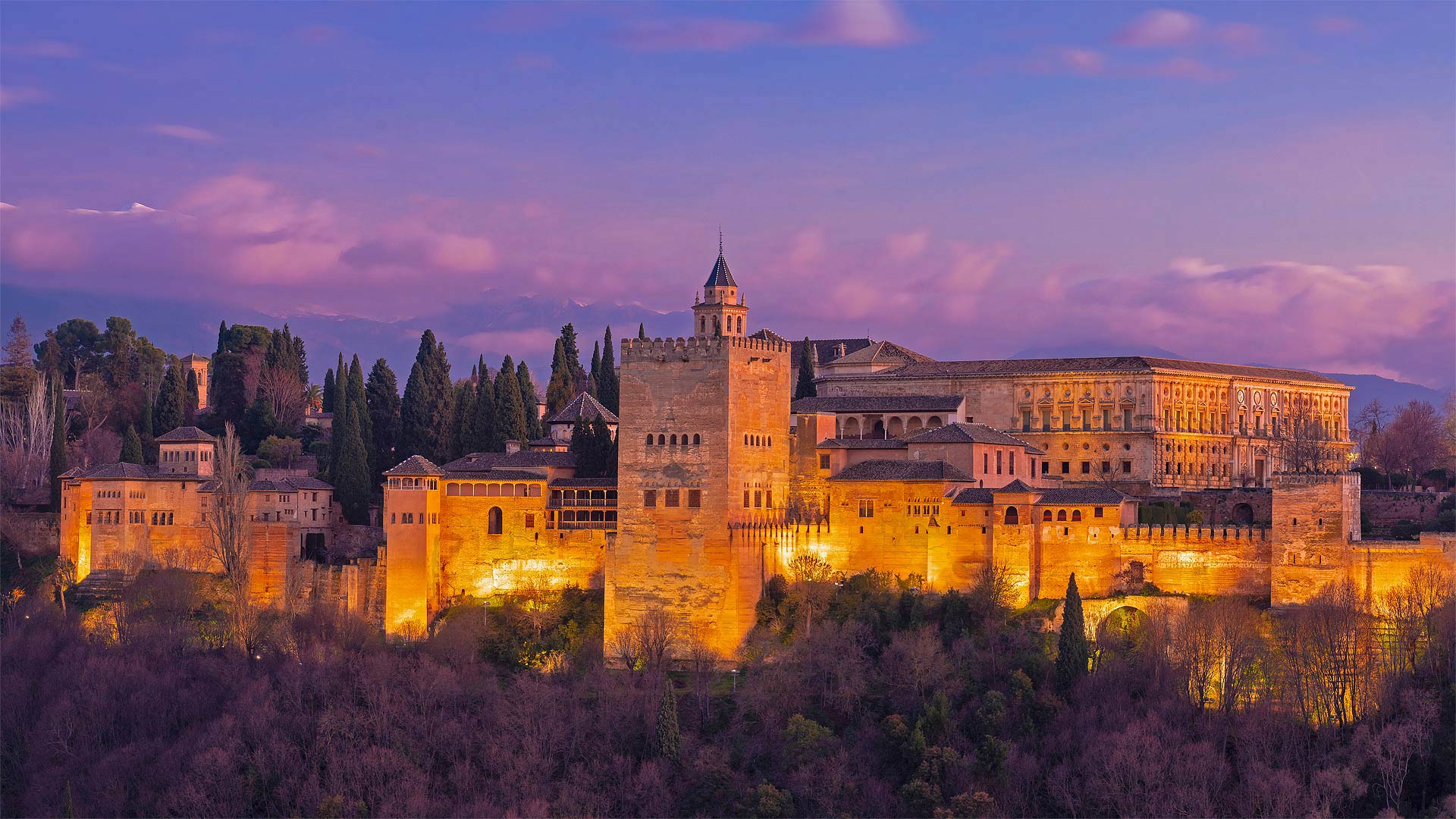
格拉纳达的阿尔罕布拉,安达卢西亚省,西班牙 Alhambra in Granada, Andalucia, Spain (© Armand Tamboly/Getty Images)
绿宝石中的珍珠 Pearl among the emeralds
The Alhambra in Granada, Spain
The winds of history have long blown through the beautiful halls of the Alhambra. Though it had been the location of fortresses as far back as the 800s, construction of the Alhambra (Arabic for 'red castle') began in 1238 under the rule of Muhammad I Ibn al-Ahmar, founder of the Emirate of Granada. Ensuing leaders would continue construction of the complex, turning it into one of the finest examples of architecture from the historic Islamic world. The palace was the final hold of the Moors before the completion of the Christian Reconquista in 1492, when the Alhambra became the royal court of Ferdinand and Isabella. They greeted Christopher Columbus there later that same year.
While Spanish rulers would soon leave their imprint on the complex, with Spanish Renaissance architecture standing in contrast to the existing structures, the next few centuries would see the Alhambra gradually fall into disrepair and disuse, including a damaging occupation by Napolean's forces during the Peninsular War of 1807-1814. After Napolean's defeat, the grand palace was rediscovered among European and American travelers, which led to several extensive restorations. In 1984 the Alhambra was named a UNESCO World Heritage Site. Today it's one of Spain's most visited tourist destinations.
西班牙格拉纳达的阿罕布拉宫
历史之风早已吹过阿罕布拉美丽的大厅。尽管早在800年代它就已经是要塞所在地,但在格拉纳达酋长国创始人穆罕默德·伊本·艾哈迈尔(MuhammadIbnAl-Ahmar)的统治下,阿罕布拉(Alhambra)(阿拉伯语中“红色城堡”)的修建始于1238年。随后的领导人将继续修建该建筑群,使其成为历史上伊斯兰世界最优秀的建筑范例之一。1492年,基督教徒收复失地,阿罕布拉成为费迪南德和伊莎贝拉的皇家宫廷,在此之前,这座宫殿是摩尔人的最后据点。同年晚些时候,他们在那里迎接了克里斯托弗·哥伦布。
虽然西班牙统治者很快会在该建筑群上留下自己的印记,西班牙文艺复兴时期的建筑与现有建筑形成鲜明对比,但在接下来的几个世纪里,阿罕布拉宫将逐渐年久失修和废弃,包括1807-1814年半岛战争期间那不勒斯军队的破坏性占领。纳波利安战败后,欧洲和美国游客重新发现了这座宏伟的宫殿,这导致了几次大规模的修复。1984年,阿罕布拉被联合国教科文组织命名为世界遗产。今天,它是西班牙游客最多的旅游目的地之一。
黄昏下的马拉加老城,西班牙 Old town of Málaga, Spain (© Sean Pavone Photo/Getty Images)
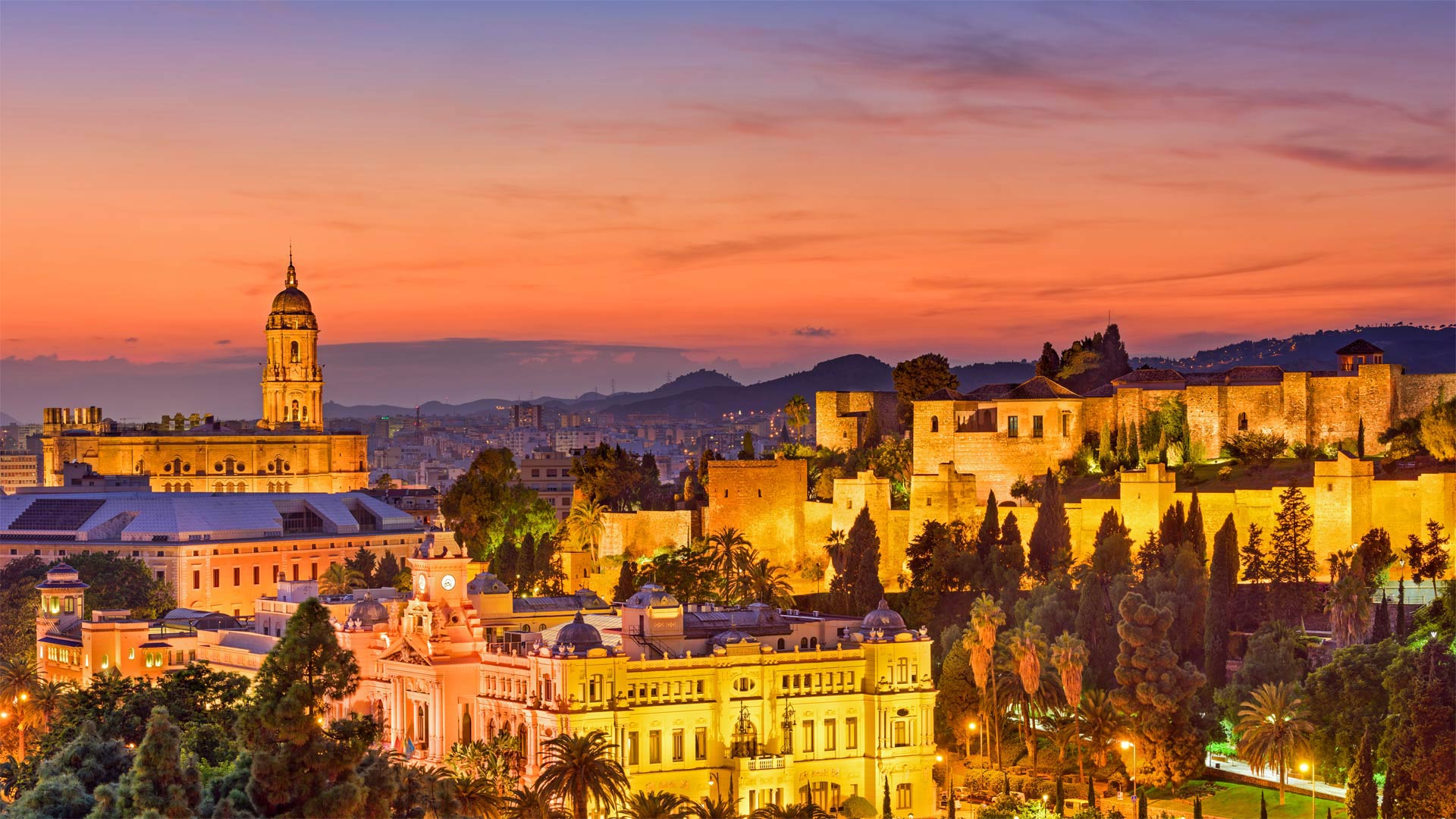
黄昏下的马拉加老城,西班牙 Old town of Málaga, Spain (© Sean Pavone Photo/Getty Images)
2800年历史的老城 2,800 years of history
Málaga, Spain
Today we're visiting a city with over 2,800 years of history, one of the oldest in Europe. Málaga is said to have been founded by the Phoenicians in 770 BCE and today its year-round exceptional weather has made it the capital of tourism in Spain. Situated perfectly along the Costa Del Sol, an estimated six million tourists make the trip to this culturally rich mecca every year. If you can pull yourself away from the beautiful beaches, you'll find yourself abound in historical architecture, museums and the local cuisine of espetos, specially skewered sardines cooked over an open fire.
Aside from paying Pablo Picasso's birthplace a visit, the most well-known reason people make the journey to Málaga is to celebrate Holy Week. Handled differently than the silent and meditative celebrations throughout the rest of Spain, Málaga's 45 processions are essentially colorful, loud, and exciting parties throughout the streets commemorating The Passion of Jesus from Palm Sunday until Easter Sunday. The event has happened for more than 500 years with a vast number of floats and other processional materials being carried over from year to year.
西班牙马拉加
今天我们要参观一座有2800多年历史的城市,它是欧洲最古老的城市之一。据说,马拉加是腓尼基人在公元前770年建立的,今天,一年到头的特殊天气使其成为西班牙的旅游之都。坐落在太阳海岸沿线,每年估计有600万游客前往这个文化丰富的麦加。如果你能远离美丽的海滩,你会发现自己拥有丰富的历史建筑、博物馆和埃斯佩托的当地美食,特别是在明火上烹制的串制沙丁鱼。
除了参观巴勃罗·毕加索的出生地,人们前往玛拉加最著名的原因是庆祝圣周。与西班牙其他地区的静默和冥想庆祝活动不同,玛拉加的45场游行基本上是五颜六色、喧闹和激动人心的聚会,贯穿于整个街道,从棕榈周日到复活节周日,纪念耶稣的激情。这件事已经发生了500多年,每年都有大量的彩车和其他游行材料被带到这里。
通往萨卡洛布拉湾的路,西班牙马约卡岛 The road leading to Sa Calobra on the Spanish Balearic island of Majorca (© Tolo Balaguer/agefotostock)
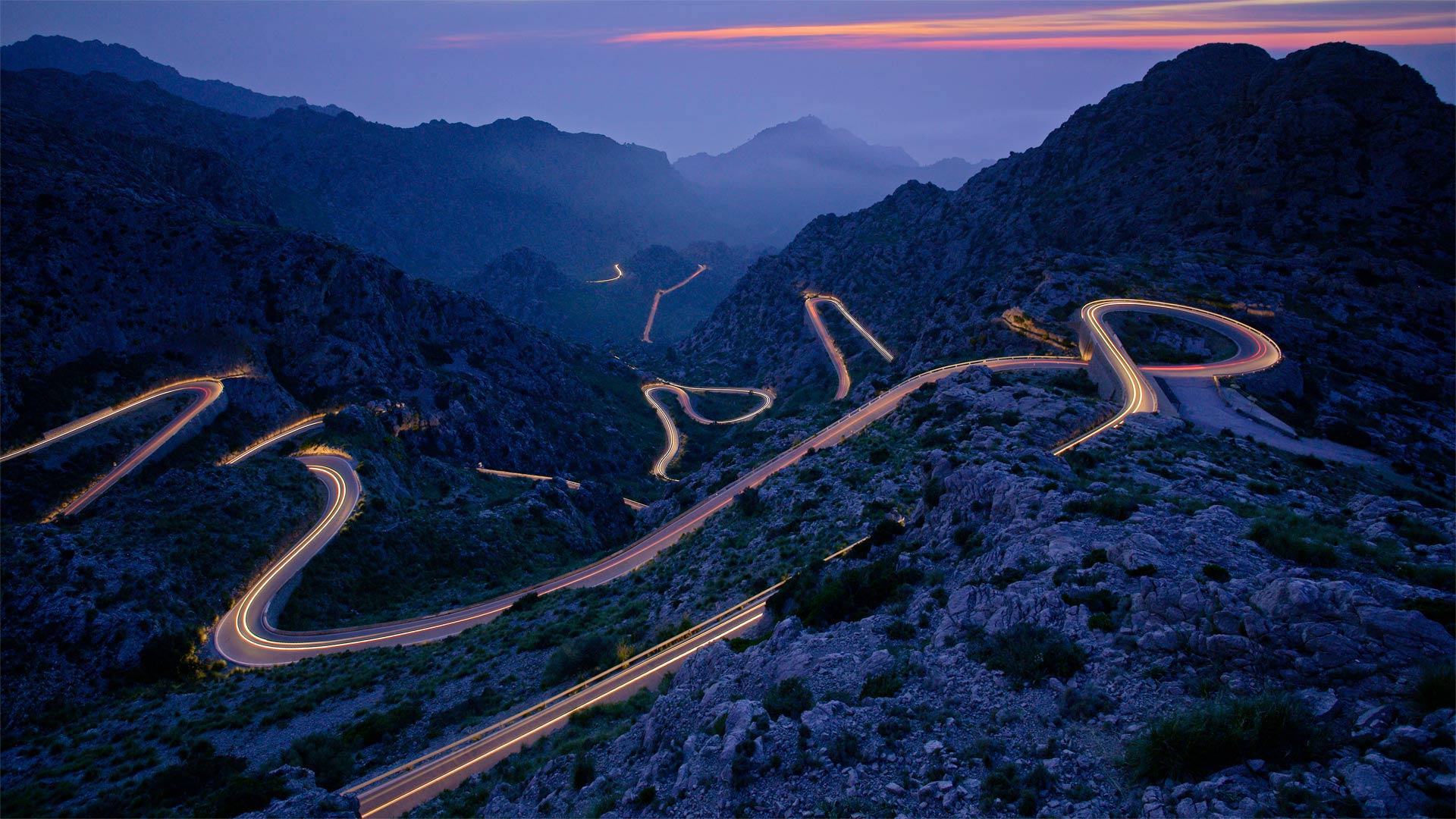
通往萨卡洛布拉湾的路,西班牙马约卡岛 The road leading to Sa Calobra on the Spanish Balearic island of Majorca (© Tolo Balaguer/agefotostock)
Road to Sa Calobra, Majorca, Spain
Though twists and turns abound on this road leading to Sa Calobra, on the Spanish island of Majorca, you'd have a hard time getting lost out here—there's only one road in and out of this coastal town. Rather than cut a more direct path through the mountains via tunnels, the road's designer chose to incorporate numerous switchbacks and hairpin turns, allowing sightseers to journey above ground. After all, if you make the long trip to this Mediterranean island paradise, you won't want to miss a thing—just keep an eye on the road too!
通往西班牙马略卡岛萨卡罗布拉的道路
虽然这条通往西班牙马略卡岛萨卡洛布拉的道路上有很多曲折,但你在这里很难迷路,因为进出这个海滨小镇只有一条路。这条路的设计者并没有通过隧道开辟一条更为直接的山路,而是选择了大量的转弯和发夹式转弯,让观光者可以在地面上旅行。毕竟,如果你长途跋涉来到这个地中海岛屿天堂,你不会想错过任何东西的,只要留意一下路就好了!
坎塔布里亚的小教堂,西班牙 The chapel and hermitage of Santa Justa in Cantabria, Spain (© Luis Miguel Martin/Getty Images)
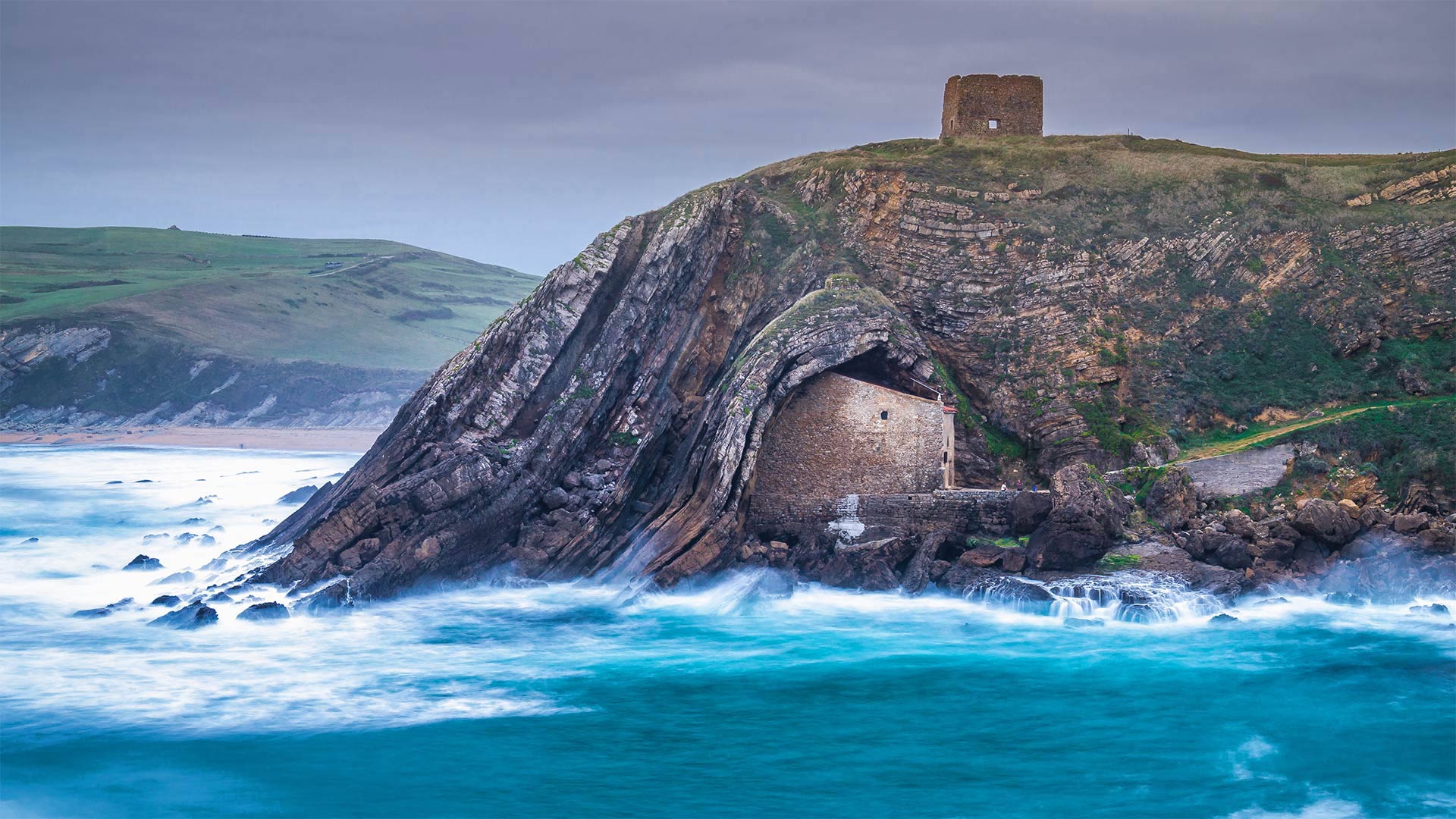
坎塔布里亚的小教堂,西班牙 The chapel and hermitage of Santa Justa in Cantabria, Spain (© Luis Miguel Martin/Getty Images)
The Hermitage of Santa Justa
Today's image brings us to Cantabria, a rugged region on the north coast of Spain. To reach this isolated stone hut, you'll need to wait until the frothing waters of the Bay of Biscay hit low tide, then traverse a silty path to the structure's façade. Peering in the windows, you'll see a cavernous room adorned with shrines—the long-abandoned living quarters of a religious hermit who dwelt here in the 8th century. Not your typical waterfront condo, but hey, it's cozy.
圣胡斯塔的隐居地
今天的图片带我们来到坎塔布里亚,一个位于西班牙北海岸的崎岖地区。要到达这座孤零零的石头小屋,你需要等到比斯开湾的泡沫水达到低潮,然后穿过一条粉土小路到达建筑物的正面。从窗户往里看,你会看到一个洞穴般的房间,里面装饰着神龛——一位8世纪居住在这里的宗教隐士长期被遗弃的居住区。这不是你典型的海滨公寓,但它很舒适。
别致的柳条田野,西班牙 Cañamares Wicker fields in Cañamares, Spain (© David Santiago Garcia/Alamy)
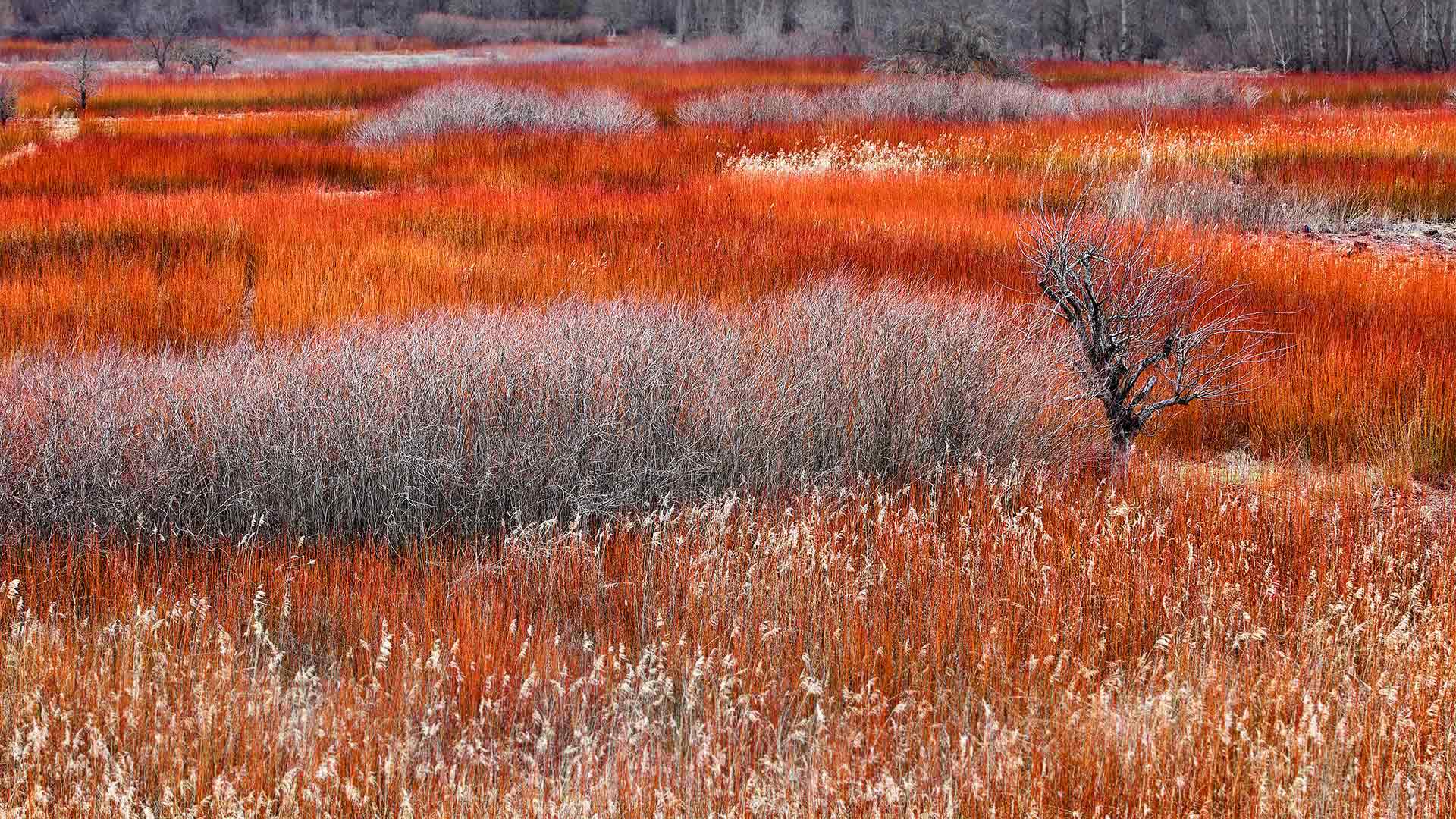
别致的柳条田野,西班牙 Cañamares Wicker fields in Cañamares, Spain (© David Santiago Garcia/Alamy)
Wicker fields in Cañamares, Spain
The summer swaths of green in this field have transformed by wintertime to a harvest-ready red—but it's not a harvest you can eat. Just what's being grown here?
Soon these reeds will be cut, bundled, and cured to become wicker. The blood-hued brush growing naturally by riverbanks near the central Spanish village of Cañamares is gathered each year by locals. The people of Cañamares maintain a centuries-old tradition of weaving with their locally harvested wicker. They create baskets, furniture, sculptures, and more from the coveted stalks.
西班牙卡尼亚马雷斯的柳条田
到了冬天,这片土地上的夏季大片绿色已经变成了可以收割的红色,但这不是你可以吃的收成。这里种的是什么?
很快,这些芦苇将被切割、捆扎并固化成柳条。每年当地人都会在靠近西班牙中部村庄卡尼亚马雷斯的河岸边采集这种自然生长的血色灌木。卡尼阿马尔人保持着用当地收获的柳条织布的悠久传统。他们用令人垂涎的秸秆制作篮子、家具、雕塑等。
鸟瞰埃尔塔霍峡谷, 西班牙龙达小镇 Aerial view of El Tajo gorge and the Puente Nuevo bridge in Ronda, Málaga, Spain (© Jude Newkirk/Amazing Aerial Agency)
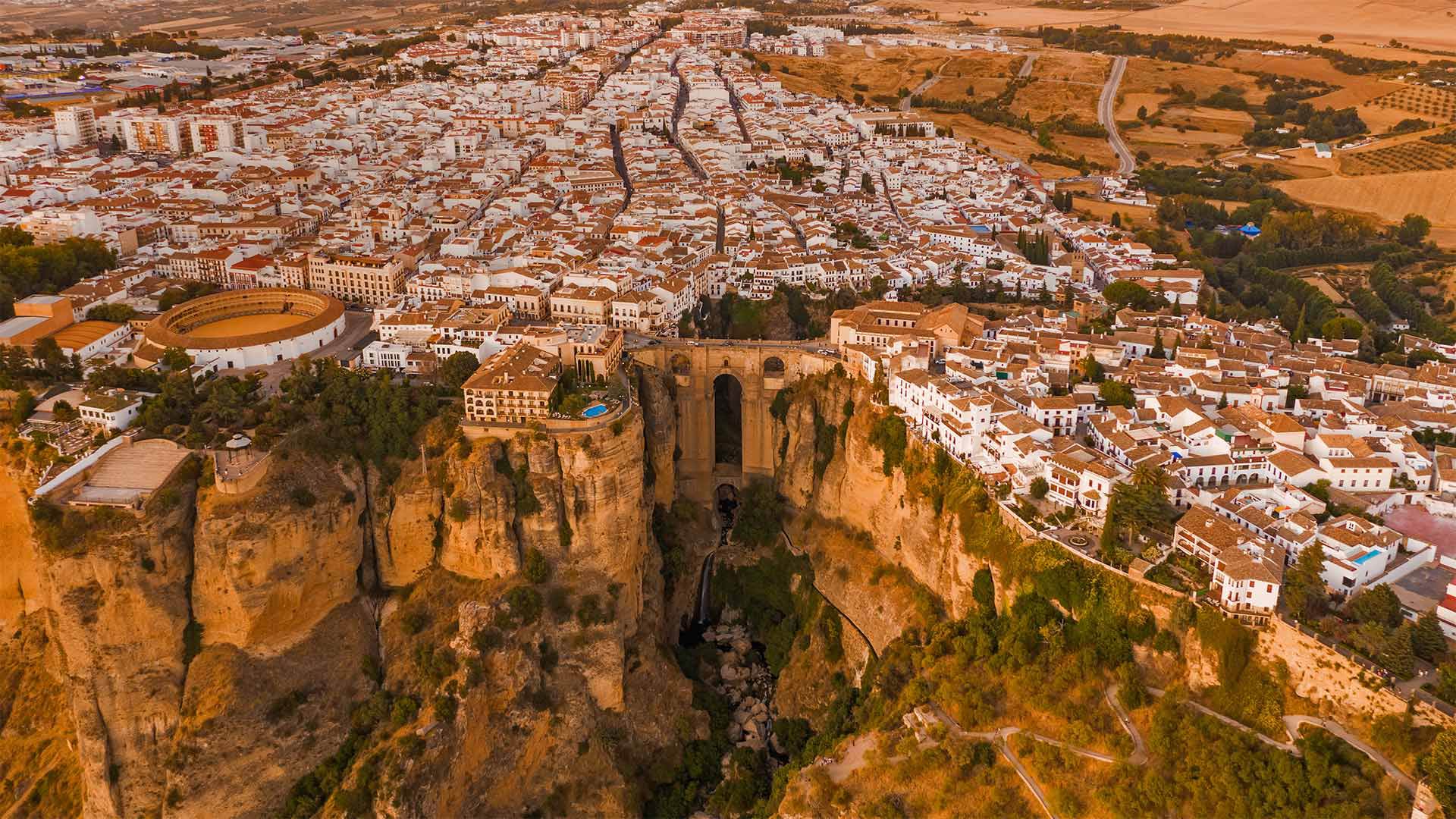
鸟瞰埃尔塔霍峡谷, 西班牙龙达小镇 Aerial view of El Tajo gorge and the Puente Nuevo bridge in Ronda, Málaga, Spain (© Jude Newkirk/Amazing Aerial Agency)
Spain El Tajo Gorge
Today we're visiting the mountaintop town of Ronda in the Málaga province of Andalusia, in the south of Spain. First settled by the Celts and later inhabited by the Romans and Moors, this dramatic cliffside setting is split in two by the El Tajo gorge, a rocky drop plummeting nearly 400 feet to the Guadalevín River. There are three bridges that span the gorge, the largest and newest of which features in the center of our homepage image and is—appropriately enough—called Puente Nuevo (New Bridge). Despite its name, the bridge is more than couple of centuries old—it was completed in 1793 and connects the Moorish old town, La Ciudad, with the new town, El Mercadillo.
The Puente Nuevo was completed by Spanish architect Jose Martín de Aldehuela, who also designed another of the historic town's famous landmarks—the open-air circular building you can see to the left of the bridge. The Plaza de Toros de Ronda is one of Spain's oldest bullrings. Built entirely of stone in the 1780s, it's considered the birthplace of modern bullfighting. It was frequented by two giants of American culture—Ernest Hemingway and Orson Welles, who were inspired by Ronda's beauty and bullfighting traditions. They spent many summers in these parts, and Welles' ashes were scattered in the town at the country estate of his great bullfighting friend, Antonio Ordóñez.
西班牙塔霍峡谷
今天,我们将参观西班牙南部安达卢西亚马拉加省的山顶小镇隆达。最初由凯尔特人定居,后来由罗马人和摩尔人居住,这一引人注目的悬崖边环境被El-Tajo峡谷一分为二,这是一个岩石瀑布,垂直下落近400英尺,直达瓜达莱文河。有三座桥横跨峡谷,其中最大、最新的一座桥位于我们主页图像的中心,被恰当地称为Puente Nuevo(新桥)。尽管它的名字,这座桥已经有两个多世纪的历史了。它是在1793年建成的,连接着摩尔人的老城La Ciudad和新城El Mercadillo。
Puente Nuevo由西班牙建筑师Jose Martín de Aldehuela完成,他还设计了这座历史小镇的另一个著名地标——你可以在桥的左侧看到的露天圆形建筑。隆达广场是西班牙最古老的斗牛场之一。在1780年代完全用石头建成,它被认为是现代斗牛的发源地。两位美国文化巨人欧内斯特·海明威(Ernest Hemingway)和奥森·威尔斯(Orson Welles)经常光顾这里,他们的灵感来自隆达的美丽和斗牛传统。他们在这些地方度过了许多夏天,威尔斯的骨灰散落在镇上他伟大的斗牛朋友安东尼奥·奥德涅斯的乡村庄园里。
